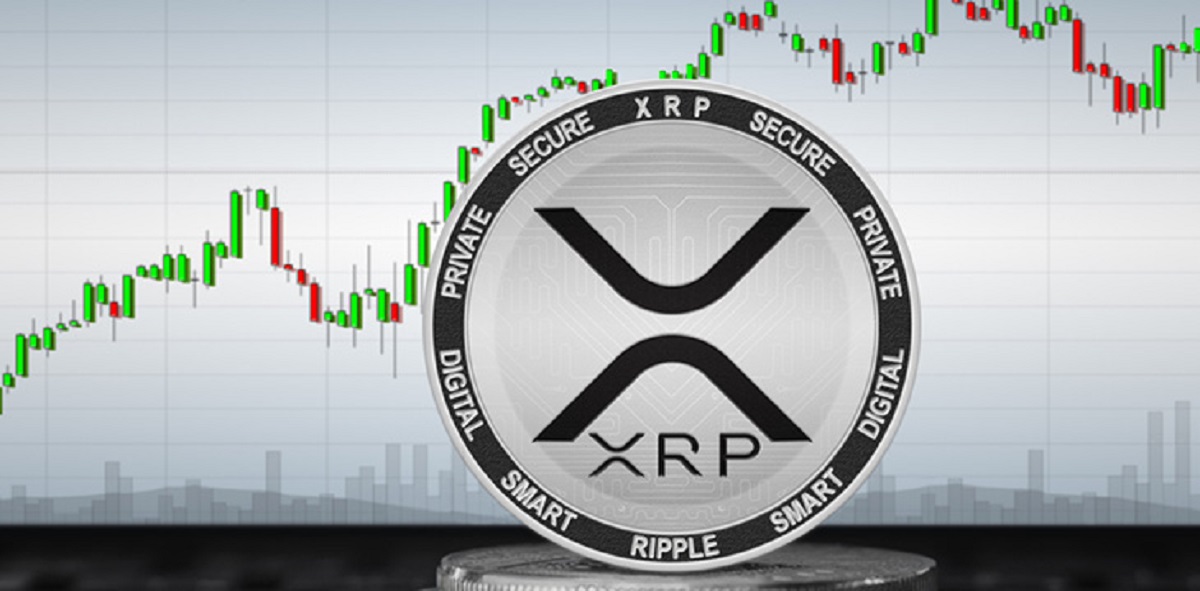Introduction
Ripple has emerged as a significant player in the world of cryptocurrencies since its inception in 2012. With its unique approach to digital transactions, Ripple aims to revolutionize the way money is transferred globally. In this article, we will delve into the basics of Ripple, understand how it works, explore its digital asset XRP, and examine its network of financial institutions called RippleNet.
Unlike traditional cryptocurrencies like Bitcoin and Ethereum, Ripple focuses on enabling fast, secure, and low-cost international money transfers. Its primary goal is to facilitate real-time global payments for financial institutions, such as banks and payment providers. Ripple’s technology and network allow for seamless transactions, eliminating intermediary costs and delays that are often associated with traditional banking systems.
In the world of cryptocurrencies, Ripple stands out due to its unique consensus algorithm, which promotes consensus among participating validators. This algorithm ensures the integrity and security of the Ripple network, while its digital asset XRP serves as a bridge currency for facilitating transactions between different fiat currencies.
Ripple’s success can be attributed to its partnerships with major financial institutions worldwide. Through RippleNet, a network of interconnected banks and payment providers, financial institutions can leverage Ripple’s technology to improve the efficiency and cost-effectiveness of their international payment systems. This has led to significant traction in the financial industry, with notable banks and payment providers integrating Ripple into their operations.
In the following sections, we will explore in detail how Ripple works, the key components of the Ripple ecosystem, the benefits it offers, and the various use cases it supports. We will also address some of the concerns and criticisms surrounding Ripple to provide a comprehensive understanding of this unique cryptocurrency and its potential impact on the financial world.
What Is Ripple?
Ripple, often referred to as Ripple Labs, is a technology company that has developed a cryptocurrency ecosystem aimed at revolutionizing the global payment industry. Ripple’s innovative approach focuses on providing a real-time gross settlement system, currency exchange, and remittance network all in one platform. Its primary objective is to enable fast and cost-effective international money transfers.
Unlike traditional cryptocurrencies like Bitcoin and Ethereum, which rely on mining and proof-of-work algorithms, Ripple uses its own patented consensus algorithm called the Ripple Protocol Consensus Algorithm (RPCA). This algorithm ensures the security and integrity of the network by requiring validators to agree on the state of the distributed ledger through a majority vote.
Ripple’s main digital asset is called XRP. XRP serves as a bridge currency in the Ripple ecosystem, facilitating the seamless exchange of different fiat currencies. It allows for quick and low-cost transactions across borders, with settlement times as low as three to five seconds.
One of the distinguishing features of Ripple is its focus on partnership with financial institutions. RippleNet, the global network of financial institutions powered by Ripple’s technology, enables member banks and payment providers to connect and transact with each other seamlessly.
Ripple’s architecture is built upon a decentralized ledger called the XRP Ledger, which is maintained by a network of independent servers. This distributed ledger technology ensures transparency, security, and immutability of the transactions recorded on the network.
Overall, Ripple is not just a cryptocurrency but a comprehensive system that aims to transform the way cross-border payments are conducted. By offering fast, secure, and cost-effective international money transfers, Ripple has garnered significant attention from financial institutions and has positioned itself as a disruptive force in the payment industry.
How Does Ripple Work?
Ripple operates on a distributed ledger technology called the XRP Ledger. Unlike traditional blockchain-based cryptocurrencies, Ripple does not rely on mining and proof-of-work algorithms. Instead, it uses the Ripple Protocol Consensus Algorithm (RPCA) to validate and confirm transactions.
At the heart of Ripple’s functionality is its unique consensus algorithm. In the RPCA, a network of validators, which can include financial institutions, validators appointed by Ripple, and independent operators, work together to achieve consensus on the state of the ledger. This consensus mechanism ensures the integrity and security of the network.
When a transaction is initiated on the Ripple network, a series of steps occur to facilitate its execution. Here’s a simplified overview of how Ripple works:
- Initiating a Transaction: A user or financial institution submits a transaction request on the Ripple network. This can involve sending or receiving funds, exchanging currencies, or executing smart contract-like functionalities.
- Validation: Validators on the network evaluate the transaction request and verify its authenticity and validity. Through the consensus algorithm, the validators agree on the state of the ledger and confirm the transaction.
- Transaction Execution: Once the transaction is validated, it is executed and recorded on the XRP Ledger. The ledger maintains a history of all transactions, providing transparency and immutability.
- Consensus Confirmation: The validators reach consensus on the newly added transaction and update the ledger accordingly. This process ensures all participants on the Ripple network have a synchronized view of the ledger.
- Funds Settlement: In the case of cross-border transactions, Ripple’s digital asset, XRP, acts as a bridge currency. It can be used to facilitate the conversion between different fiat currencies, ensuring fast and cost-effective transfers.
Ripple’s architecture and consensus mechanism enable the network to process transactions quickly, with settlement times often taking just a few seconds. This speed, along with low transaction fees, makes Ripple an attractive option for financial institutions looking to improve the efficiency and cost-effectiveness of their international payment systems.
Overall, Ripple’s unique approach to transaction validation and its integration with the XRP Ledger allows for fast and secure transactions, making it a viable solution for the global payment industry.
The Ripple Consensus Algorithm
The Ripple Protocol Consensus Algorithm (RPCA) is the underlying consensus mechanism that powers the Ripple network. It ensures agreement and validation of transactions on the XRP Ledger, the distributed ledger technology utilized by Ripple. Unlike traditional proof-of-work algorithms used by many cryptocurrencies, the RPCA achieves consensus through a unique approach.
At the core of the RPCA is a network of independent validators that includes financial institutions, validators appointed by Ripple, and independent operators. These validators work collaboratively to validate and agree on the state of the ledger. Here’s how the Ripple Consensus Algorithm works:
- Validator Proposal: Validators propose a set of transactions to include in the next ledger. They independently determine which transactions to include based on transaction fees, transaction validity, and other predetermined factors.
- Preference Calculation: Each validator determines their own preferred set of transactions to include in the next ledger. These preferences are calculated based on the previous ledger state and the proposed transactions.
- Consensus Agreement: Through an iterative process, the validators communicate and compare their preferences until they reach an agreement on a single set of transactions. This agreement ensures all validators have a consistent view of the ledger and eliminates the need for mining or computational puzzles.
- Transaction Confirmation: Once consensus is reached, the agreed-upon transactions are confirmed and added to the ledger. The confirmed transactions are then considered final and cannot be reversed or modified.
- Propagation and Validation: The confirmed transactions are propagated across the network, allowing all participants to update their local copies of the ledger. Validators then independently validate the transactions to ensure their compliance with the network’s rules and integrity.
The Ripple Consensus Algorithm offers several advantages. First, it enables fast transaction processing times, with settlement typically taking just a few seconds. This speed is crucial for financial institutions that require real-time payment processing. Second, the RPCA minimizes energy consumption and resource requirements compared to traditional proof-of-work algorithms, making it more sustainable and cost-effective.
By achieving consensus among the validators, the Ripple network ensures the security, integrity, and consistency of the ledger. This consensus mechanism allows Ripple to offer a reliable and efficient platform for global payment transactions.
It’s worth noting that Ripple continually evaluates and updates its consensus algorithm to enhance performance and address emerging challenges. This commitment to innovation and improvement underscores Ripple’s dedication to providing a robust and scalable infrastructure for financial institutions.
Ripple’s Digital Asset: XRP
XRP is the native digital asset of the Ripple network. It plays a critical role in facilitating fast and cost-effective transactions on the platform. Unlike other cryptocurrencies that are primarily used for speculative purposes, XRP serves as a bridge currency for converting and transferring value between different fiat currencies.
As a bridge currency, XRP allows for seamless and efficient cross-border payments. When a financial institution initiates a transaction on the Ripple network involving two different fiat currencies, XRP acts as a temporary intermediary. Here’s how it works:
- Source Currency: The financial institution converts the source currency into XRP.
- Bridge Currency: XRP is transferred across the Ripple network.
- Destination Currency: The recipient’s financial institution converts XRP into the destination currency.
This process eliminates the need for multiple currency conversions and reduces the costs and delays typically associated with cross-border transactions. XRP bridges the gap between different fiat currencies, allowing for seamless value transfer in real-time.
Another key feature of XRP is its deflationary nature. Unlike traditional fiat currencies that may experience inflation, XRP has a limited supply. The total supply of XRP is capped at 100 billion coins, with a significant portion held by Ripple Labs. This limited supply creates scarcity and could potentially lead to increased XRP value over time as demand grows.
Ripple’s reliance on XRP as a bridge currency has generated both support and criticism. Advocates believe that XRP’s liquidity and utility make it essential for streamlining international transactions. Furthermore, as more financial institutions and businesses adopt Ripple’s technology, the demand for XRP is expected to increase, potentially driving its value up.
However, critics argue that the heavy ownership of XRP by Ripple Labs raises concerns about centralization and potential manipulation of the market. Additionally, some critics question the necessity of XRP as a bridge currency, suggesting that financial institutions could achieve the same results using other methods without relying on a specific digital asset.
Despite the criticisms, XRP remains an integral component of Ripple’s ecosystem. Its ability to facilitate fast and inexpensive transactions across borders has positioned it as a valuable asset for financial institutions and individuals seeking efficient cross-border payment solutions.
RippleNet: The Network of Financial Institutions
RippleNet is a global network of financial institutions powered by Ripple’s technology. It serves as the backbone for connecting banks, payment providers, and other financial institutions to facilitate seamless cross-border transactions. RippleNet enables participants to leverage Ripple’s innovative solutions to improve the speed, cost, and reliability of their international payment systems.
RippleNet consists of two key elements: the network of participating financial institutions and the suite of software solutions provided by Ripple. These components work in tandem to enable efficient and secure transactions. Here’s how RippleNet functions:
- Network of Financial Institutions: RippleNet connects financial institutions worldwide, including banks, payment providers, and other financial service providers, into a unified network. Participating institutions can communicate and transact with each other directly, eliminating the need for intermediaries and reducing associated costs.
- Ripple’s Software Solutions: Ripple provides a suite of software solutions that financial institutions can integrate into their existing infrastructure. The key software solutions offered by Ripple include xCurrent, xRapid, and xVia.
- xCurrent: xCurrent enables real-time messaging and settlement between financial institutions. It allows banks to confirm payment details and initiate transfers instantly, increasing the efficiency and transparency of cross-border transactions.
- xRapid: xRapid leverages XRP as a bridge currency to provide liquidity and improve the speed of transaction settlement. It enables financial institutions to minimize liquidity costs and optimize the capital required for cross-border transfers.
- xVia: xVia serves as a standardized interface for financial institutions. It enables seamless integration with RippleNet and allows for easy access to the network’s benefits, including enhanced reach, cost savings, and improved end-to-end transaction visibility.
By utilizing Ripple’s software solutions and participating in RippleNet, financial institutions gain access to several benefits. These include faster settlements, lower transaction costs, improved transparency, and increased operational efficiency. RippleNet also enhances the visibility of transactions, providing real-time tracking and monitoring capabilities.
Ripple’s focus on collaboration with financial institutions has been a key driver of its success. By partnering with Ripple, financial institutions can tap into a network of trusted organizations and leverage Ripple’s technology to strengthen their international payment systems. Notable banks and payment providers, including Santander, American Express, and MoneyGram, have already integrated Ripple’s solutions into their operations.
As RippleNet continues to expand, more financial institutions are recognizing the value of joining the network. By doing so, they can streamline their cross-border payment processes, improve customer experiences, and stay at the forefront of technological advancements in the financial industry.
Benefits of Ripple
Ripple offers several significant benefits that set it apart from traditional payment systems and other cryptocurrencies. Its innovative approach to cross-border transactions has garnered attention from financial institutions worldwide, leading to widespread adoption. Here are some of the key benefits of Ripple:
- Speed and Efficiency: Ripple enables near-instant transaction settlements, with some payments completing within seconds. This speed is significantly faster than traditional payment systems, which can take days to process international transfers. The efficiency of Ripple’s technology allows financial institutions to provide faster and more reliable payment services to their customers.
- Cost-Effectiveness: Ripple’s low transaction fees make it an attractive option for financial institutions seeking to reduce cross-border transaction costs. By eliminating intermediaries and streamlining the settlement process, Ripple offers a more cost-effective alternative to traditional banking systems. This cost-efficiency translates into savings for both financial institutions and end-users.
- Transparency: The use of distributed ledger technology ensures transparency in Ripple’s transactions. All participants on the network can view and verify the transaction history recorded on the XRP Ledger. This transparency not only enhances trust but also enables efficient auditing and regulatory compliance.
- Global Reach: Ripple’s network, RippleNet, connects financial institutions worldwide, enabling seamless cross-border transactions. This global reach allows institutions to expand their payment services and reach new markets quickly. RippleNet’s connectivity ensures interoperability, making it easy for financial institutions to transact with each other regardless of their geographical location or existing infrastructure.
- Liquidity Solutions: Ripple’s digital asset, XRP, serves as a bridge currency, providing liquidity for cross-border transactions. This liquidity solution helps financial institutions address liquidity challenges and reduce the capital required to facilitate transfers. By utilizing XRP, institutions can optimize the use of their funds and reduce exposure to foreign exchange risks.
- Scalability: Ripple’s technology has been designed to handle high transaction volumes efficiently. With the ability to process thousands of transactions per second, Ripple provides the scalability required for global payment systems. This scalability ensures that the network can handle increasing demand as adoption continues to grow.
Overall, Ripple’s benefits in terms of speed, cost-effectiveness, transparency, global reach, liquidity solutions, and scalability make it an appealing option for financial institutions aiming to modernize their cross-border payment systems. By leveraging Ripple’s technology and network, these institutions can enhance their operational efficiency, improve customer experiences, and stay competitive in the rapidly evolving fintech landscape.
Use Cases of Ripple
Ripple’s technology and digital asset, XRP, have found numerous applications and use cases within the financial industry. Its unique features and benefits make it suitable for a range of scenarios where fast, secure, and cost-effective cross-border transactions are essential. Here are some prominent use cases of Ripple:
- Remittances: Cross-border remittances are a significant use case for Ripple. Many individuals work abroad and send money back home to their families. Ripple’s technology enables near-instant transfers at a fraction of the cost compared to traditional remittance services. This use case has the potential to improve the financial well-being of millions of people by reducing fees and increasing the speed of fund transfers.
- Corporate Payments: Ripple’s technology is also well-suited for corporate payments, particularly for businesses engaged in international trade. With Ripple, companies can settle their invoices and pay their suppliers in different currencies quickly and efficiently. The use of XRP as a bridge currency reduces the reliance on multiple intermediaries and simplifies the payment process.
- Liquidity Management: Ripple’s digital asset, XRP, can serve as a source of liquidity for financial institutions. Banks and payment providers can hold XRP as a reserve, allowing for faster execution of transactions and reducing the need for maintaining liquidity across various fiat currencies. This use case helps institutions optimize their capital and liquidity management strategies.
- Microtransactions: Ripple’s low transaction fees and fast settlement times make it suitable for microtransactions. This can benefit industries such as gaming, content monetization, and online marketplaces, where small, frequent payments are involved. The ability to process microtransactions efficiently opens up new revenue models and opportunities for businesses in the digital economy.
- Emerging Markets: Ripple’s network and digital asset can provide financial inclusion opportunities in emerging markets. Often, people in these markets lack access to traditional banking services or face high fees for cross-border transactions. Ripple’s technology allows individuals and businesses in these regions to connect to the global financial system and access low-cost, fast, and secure payment solutions.
- Banking Partnerships: Ripple’s partnerships with major financial institutions have led to collaborative use cases. For instance, some banks have integrated Ripple’s technology to offer instant, cross-border payment services to their customers. These partnerships enhance the speed and efficiency of banking services, benefiting both the financial institution and its customers.
These are just a few examples of the diverse use cases enabled by Ripple’s technology and XRP. The flexibility and scalability of Ripple’s platform make it adaptable to various industries and payment scenarios. As adoption continues to grow, Ripple’s potential to transform the way money is transferred globally becomes increasingly evident.
Concerns and Criticisms of Ripple
While Ripple has gained significant traction and adoption within the financial industry, it is not without its fair share of concerns and criticisms. Understanding these potential drawbacks is crucial for a comprehensive evaluation of Ripple’s impact. Here are some of the key concerns and criticisms surrounding Ripple:
- Centralization: One of the primary concerns surrounding Ripple is the level of control that Ripple Labs, the company behind Ripple, retains over the XRP supply. As Ripple Labs holds a substantial amount of XRP, there are concerns about potential market manipulation and centralization of power. Critics argue that this contradicts the decentralized nature often associated with cryptocurrencies.
- Regulatory Uncertainty: Ripple’s association with the traditional financial system has raised questions about its compliance with regulatory frameworks. Regulatory uncertainty, particularly regarding the classification of XRP, presents challenges for Ripple and its adoption by financial institutions. Clarity and cooperation with regulators will be crucial for Ripple’s continued growth and acceptance.
- Dependency on Financial Institutions: Ripple’s success is closely tied to partnerships with financial institutions. Some critics argue that this reliance on established players undermines the disruptiveness that cryptocurrencies are expected to bring. If partnerships wane or financial institutions opt for alternative solutions, Ripple’s growth could be hindered.
- Competitive Landscape: Ripple operates in a highly competitive environment, facing rivalry from other payment providers and cryptocurrencies. The success of Ripple hinges on its ability to continuously innovate and stay ahead of the competition. Failure to do so could result in diminished market share and relevance.
- Perception as a Bank Coin: Ripple’s association with banks and financial institutions has led to a perception that it is not a true cryptocurrency. Some critics argue that Ripple’s close alignment with the traditional banking system contradicts the principles of decentralization and independence that underpin many other cryptocurrencies.
- Concerns Over Adoption: While Ripple has gained traction with several major financial institutions, there are concerns about widespread adoption beyond its existing partnerships. Some financial institutions may be hesitant to embrace Ripple due to the aforementioned regulatory uncertainties or the perception that it competes with their existing systems.
It’s important to note that while these concerns and criticisms exist, Ripple continues to make strides in addressing them. Ripple Labs actively collaborates with regulators and advocates for clarity regarding the classification and regulation of XRP. The company also continuously works to expand its network of partnerships and explore new avenues for growth.
As Ripple further establishes itself in the financial landscape, addressing these concerns will be crucial for building trust and ensuring its long-term success in the evolving cryptocurrency industry.
Conclusion
Ripple has emerged as a significant player in the world of cryptocurrencies, offering a unique approach to cross-border transactions and revolutionizing the global payment industry. Through its advanced technology, Ripple aims to provide fast, secure, and cost-effective international money transfers for financial institutions worldwide.
With its innovative consensus algorithm, the Ripple Protocol Consensus Algorithm (RPCA), Ripple ensures the integrity and security of transactions on its network. The use of XRP as a bridge currency further enhances the efficiency and speed of cross-border transfers, while RippleNet connects financial institutions to create a seamless network for global payments.
The benefits of Ripple are evident, with its speed, cost-effectiveness, transparency, global reach, liquidity solutions, and scalability setting it apart from traditional payment systems. Ripple’s technology has found diverse use cases, including remittances, corporate payments, liquidity management, microtransactions, and financial inclusion in emerging markets.
Despite its success, Ripple faces concerns and criticisms, including issues of centralization, regulatory uncertainties, dependencies on financial institutions, competition, and the perception of being a bank coin. However, Ripple Labs actively addresses these concerns, collaborates with regulators, and continues to expand its network of partnerships.
As Ripple continues to innovate and address the challenges it faces, the potential for transforming the way money is transferred globally remains considerable. The increasing adoption of Ripple’s technology by financial institutions and the broad confidence it has garnered validate its relevance and impact.
While the road ahead may present obstacles, Ripple’s commitment to revolutionizing cross-border payments and its dedication to providing efficient, secure, and cost-effective solutions make it a significant player in reshaping the financial industry.

























